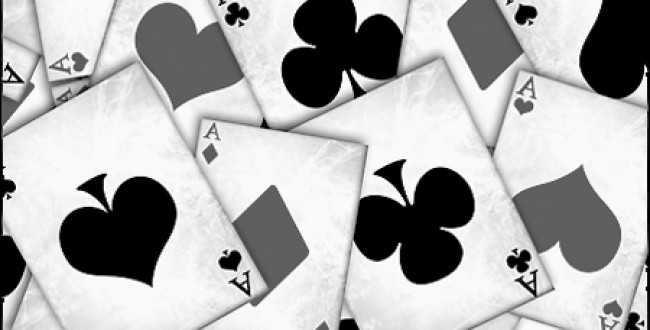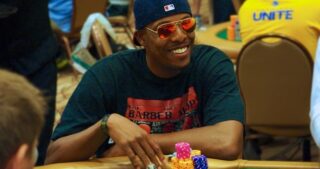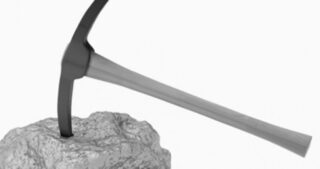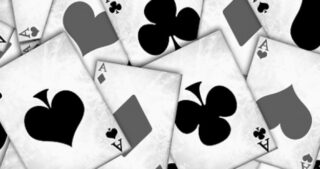Choosing the right mix of starting hands is a difficult task for beginning poker players in no limit Texas Holdem. Here's a safe strategy when you start out in holdem.
When you start out in no limit Texas Holdem, you'll pretty fast develop a feeling for situations on the river. When can you call, when should you fold, when is it time for a bluff?
Learn from other players' mistakes

Those situations are relatively simple, and you get to see right away if you made an error, since it's the last decision in the hand.
Conversely, what starting hands to throw away and which to invest in, is the first decision in each hand you play. Causes and consequences are separated by several betting rounds, which makes it hard to learn from your mistakes.
It's impossible to figure out beforehand if a starting hand will show long term profitability or not.
Until you have gathered a lot of experience, your best shot is to listen to the experience of others. Below is a summary of the pre-flop strategy tips that professional poker players suggest for beginners in the game.
It depends on your position
The player on the button acts last on each turn of the hand. This is a huge advantage, since you can base your decision on more information than the other players.
Poker is a game of information, so having more information is a key to success in poker.
In early position all your equity has to come from your hand, while in later positions, the value of position compensates for a lesser hand. That's why you can play more hands from late position.
(Note that playing more hands means playing worse hands on average.)
Early position strategy
You're very vulnerable to the action behind you, on all streets. Everybody can wait and see what you do and act accordingly.
Only very few, strong hands can be played from early position.
The standard hand range here consists of the following hands: AA, KK, QQ, JJ, TT, AK, AQ. JJ and TT being considered marginal. By all means, throw them away if you feel uncomfortable for some reason.
The basic tip is to enter the pot with a raise in order to show the opposition that you're in the pot with a real hand.
Middle Position strategy
In middle position, you have a little more information. The players in front of you have made some decisions, you have picked up one or two hints about their cards. There's also fewer players left to act behind you.
If a player in early position has raised, you know from the above that he or she has a real hand most of the time. Now even a hand like AQ may seem a bit on the weak side for you, since most of the hands that you yourself would play in early position has AQ beat. On the other hand, if the players in front of you have folded, AQ is an easy play from middle position.
When you're in middle position with a hand you'd play from early position, you can and should re-raise a player who put in a bet before you. You have a premium hand, and you will act after him or her all through the hand, which is a great advantage.
In middle position, you can admit the middle pairs into your hand mix. 99, 88, 77, maybe 66. Hands like AJ and maybe AT are playable.
Once in a while you may want to mix it up with suited connectors and small pairs: 87, 76, 65, 55, 44. But if you play those all the time, they'll probably show up as a loss in your stats.
Late Position strategy
In late position, you have all the information you can ever hope for. It's still limited, that's the nature of poker, but you know more than any other player in the hand.
If there's a lot of action in front of you, you have an easy fold with many hands. But with premium hands your situation is very nice. You can raise or re-raise and when the flop comes, you can sit back and let the other players make their decisions with no clue about where you're at.
If no one has raised the pot before you, a lot of your hands now turn into raising hands. Hands like A9 and KQ are now likely to be the best hand, plus you have the value of position on later streets working for you.
Again, if someone has raised in front of you, A9 is not a strong hand, and position alone can't make up for its weakness. If you hit the ace, you're often up against a better ace, and if you hit the nine, there are usually a lot of overcards that will beat you, as well as higher pocket pairs.
If several players limp in front of you, they create odds for you to play drawing hands. Now all suited aces become permissible, because if you flop a flush draw you'll often have the necessary pot odds to draw to the flush.
Suited kings can also be playable, but only if you remember that you won't have the nut flush most of the time. Tread carefully.
Playing In the blinds
From the blinds you play in the worst possible position. True, before the flop you act last, but most hands are not decided before the flop.
After the flop, you'll have to act before even the players in early position.
Small blind is the worst position of all. You'll always have at least one player behind you. In the big blind you can actually be in last position after the flop - if everybody folds except for the small blind.
When you're in the blinds, entering a pot costs a little less than otherwise, since you put in a bet before the hand even started. This improves your pot odds somewhat. This is especially true for the big blind, who has put in twice the small blind.
If you're in the small blind and five players limped in, you get 13-1 on your call, which is enough for more or less every imaginable hand.
Another aspect is blind defense. To stop the other players from going after your blinds at all times, you need to defend it on a regular basis. You need to waste a few bucks now and then to improve the long run stats. Just don't overdo it.
When you're in the blinds, if the hand can be decided before the flop, it's never a bad thing. Then you don't have to play out of position. So, if you have a hand you want to play, nothing wrong in making the raise a little extra steep.
How to figure out your position
Your position in the hand is calculated "backwards". What counts is how far to the right from the button you sit. (Not how far to the left of the big blind.)
| Distance from button | Position |
| 0-1 | Late |
| 2-4 | Middle |
| 5-7 | Early |
Note: An interesting result of this is obvious in short handed play: With only six players, there's no early position! Two players are on the blinds, the button and the player to his right are in late position, and the rest are in middle position.
This is why, in short handed games, you need to be playing more hands than in full ring games. You simply play the middle position pre flop strategy (see above).
/Charlie River












